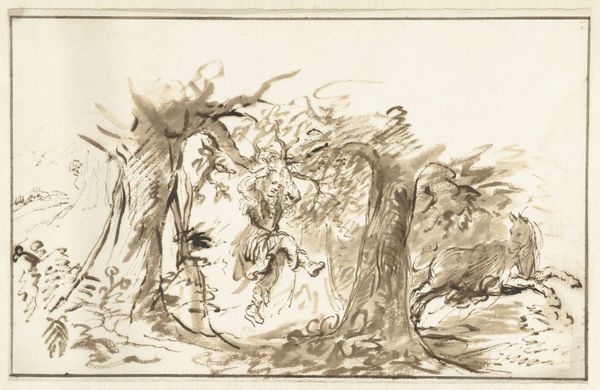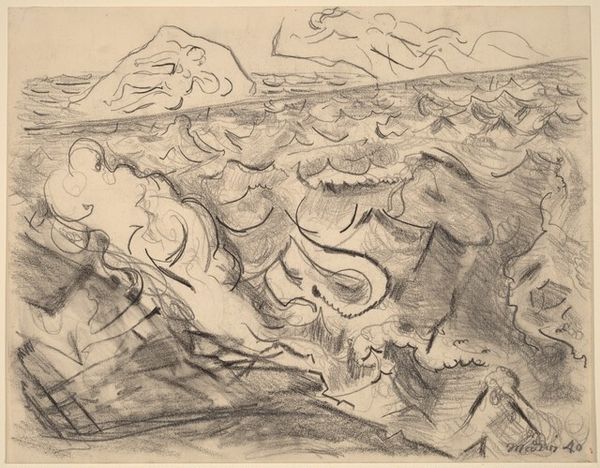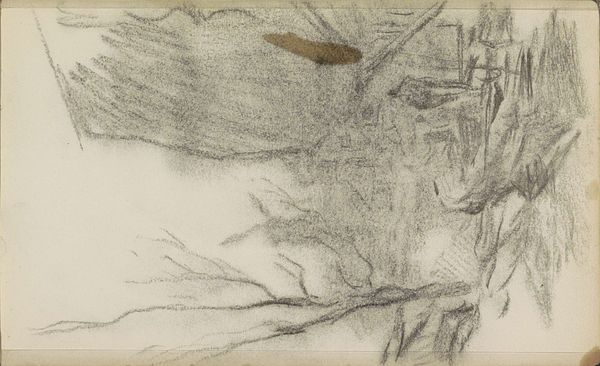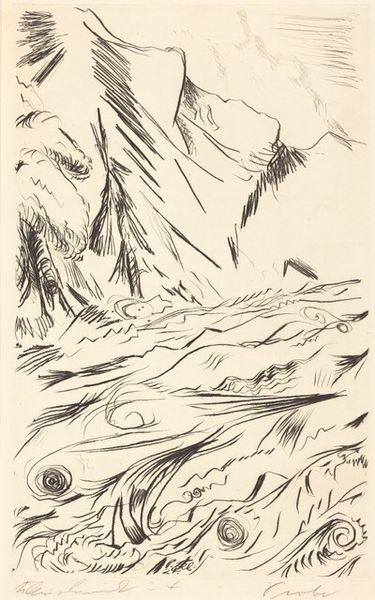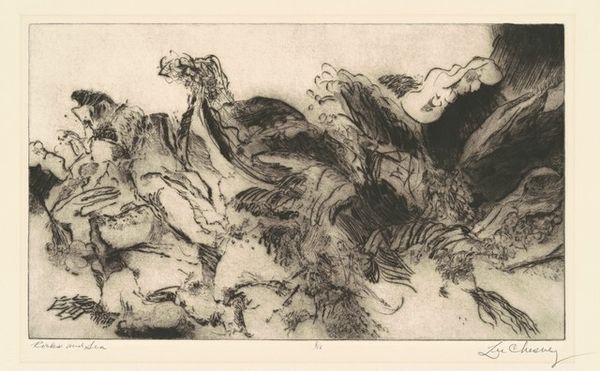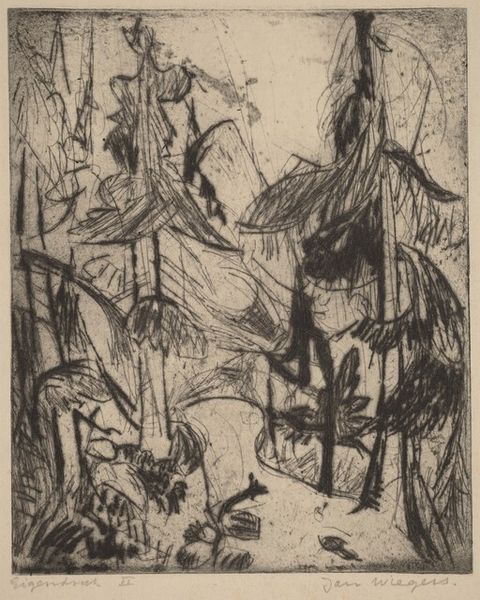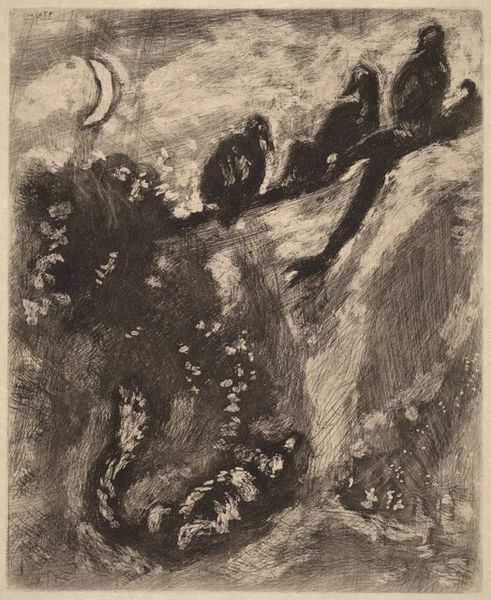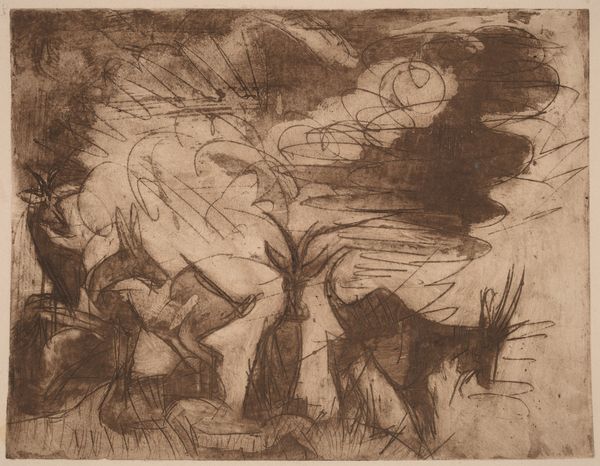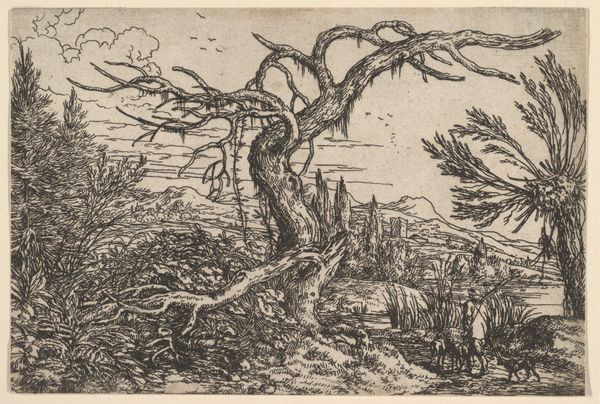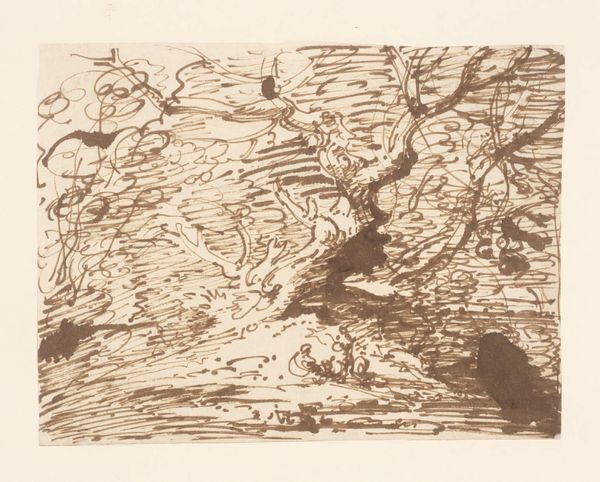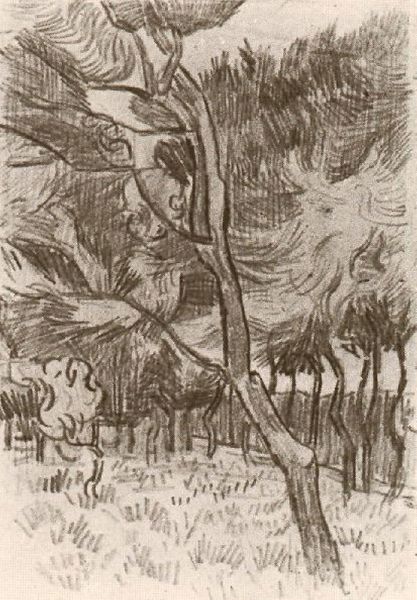
Copyright: National Gallery of Art: CC0 1.0
Curator: Walther Klemm’s “Untitled (Fantastic Subject),” created around the 1930s, arrests me with its tempestuous scene. The monochromatic drawing shows figures, seemingly caught in some act against the backdrop of an expressionistic landscape, it feels intensely dramatic and bleak. Editor: The frenetic energy is immediately palpable. The stark contrast, the chaotic lines—they create an oppressive, almost violent mood. I'm curious, how do Klemm’s chosen materials contribute to this effect? Curator: Absolutely, Klemm’s expert utilization of ink and charcoal emphasizes the Expressionistic nature. This movement frequently grappled with representing intense emotion, often highlighting the grotesque. Considering the rise of extremism in the 1930s in Europe, it would be valuable to consider how his choice to use widely accessible, economical materials—like ink and charcoal on paper—reflected an engagement with a broader populace affected by these social changes. Were these pieces made as acts of protest, or mere reflections of grim life? Editor: I find the composition equally fascinating. Look at how the swirling lines converge and emphasize the visual weight on the figures in the foreground, and contrast that with how the tree seems to be clawing towards the falling person. It makes me think about traditional symbolism within Expressionism - does that turbulent sky represent internal emotional chaos reflected outward? The way the figures below have extended hands might be indicative of a desperate situation. Curator: Considering the means of artistic production in that era, particularly in Germany, the physical creation of works like this provided an outlet—an embodied experience for both the artist and potential viewers. Prints are so very accessible. I cannot dismiss the immediate context and constraints of that time, and the agency printmaking offered to artists. The themes presented might simply offer the chance to think about power structures in the 30’s and make artwork available to everyone as a way of doing it. Editor: It's hard to look away from the formal execution and the visceral effect. I'm left pondering on Expressionism and the symbolic depth that lurks beneath these turbulent surfaces. Curator: Ultimately, the piece speaks volumes about the artist’s era. Klemm challenges us to grapple with that period's realities, making us question the artwork and the artist's place within his culture and context.
Comments
No comments
Be the first to comment and join the conversation on the ultimate creative platform.
